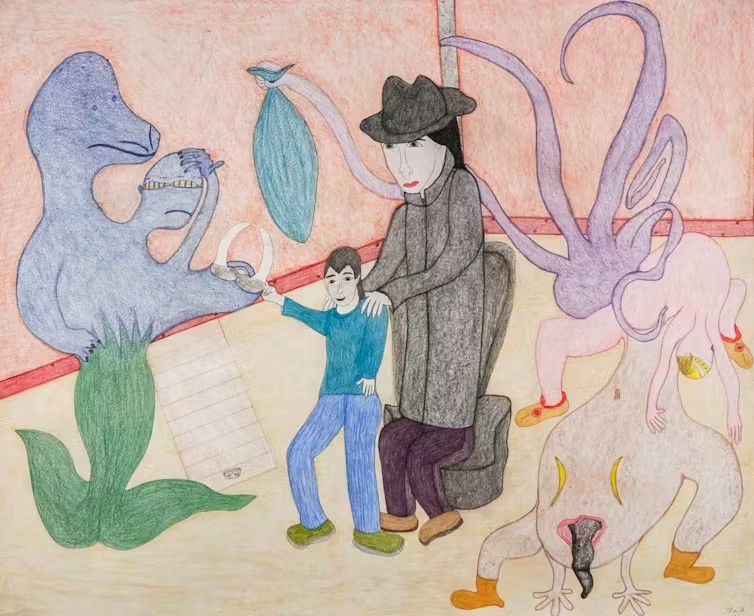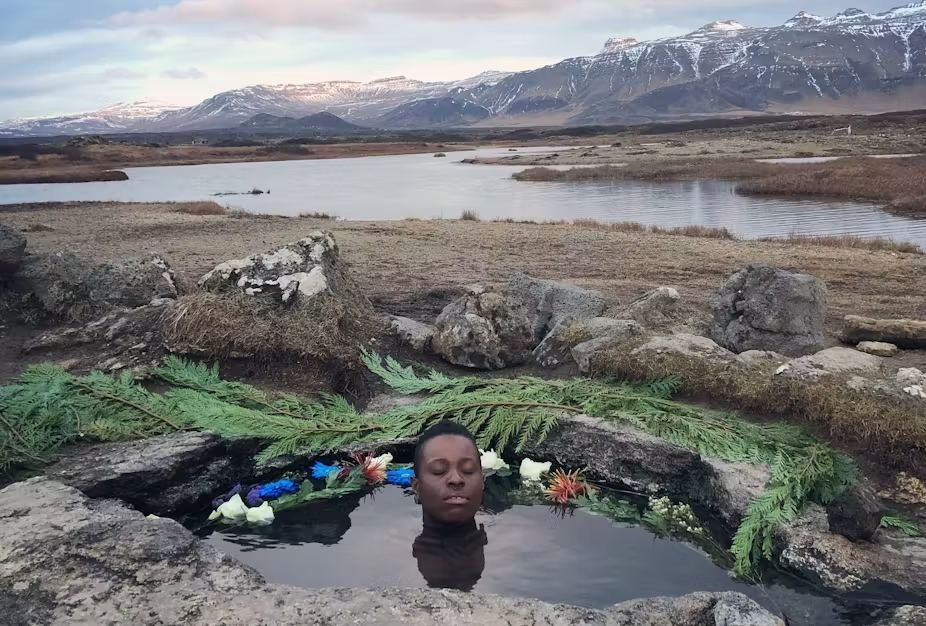There has been a conspicuous turn to the sea as inspiration for art and exhibitions since the mid-2010s. This is a trend we have charted in our ongoing collaborative research project, Curating the Sea. So prolific has this become, that there are even gallery spaces dedicated entirely to the sea in contemporary art.
The sea has, of course, been the subject of art throughout history. However, our investigation into contemporary art and exhibitions has revealed a shift from celebrations of oceanic abundance and wonder towards more political projects.
In our research, we have argued for the importance of curation as a way to confront the issues facing the oceans today. So it was only natural that we turn our hands to curating our own exhibition about the sea, based on our extensive collaborative research.
Sea Inside is part of the current season at the Sainsbury Centre in Norwich, which asks, “can the seas survive us?”
Western art has tended to frame the ocean as an unfathomable and formidable force in the tradition of the sublime: art that produces or is inspired by the strongest emotions the mind is capable of feeling, often arising from the encounter with the natural world. Sea Inside counters this perspective. Collectively, artworks in the exhibition portray the sea not as a surreal or alien space, but as an entity that is intimately connected to humans.
Many Indigenous and diasporic communities have long been aware of the profound human connection to the sea. In our exhibition, Shuvinai Ashoona’s coloured pencil drawings illustrate the intermingling of Inuit mythology with everyday life in the Canadian Arctic. In one scene, mythical marine creatures populate a dentist’s office.

Composition At the Dentist by Shuvinai Ashoona. Shuvinai Ashoona, courtesy of the collection of Alexander V. Petalas
Meanwhile, Tyler Eash’s sculpture features a shell of the critically endangered abalone mollusc. They are known as “grandmother shells” among North American west coast Indigenous cultures as they are commonly passed down through families by female elders. The work speaks to ties of kinship (human and animal), their fragility and resilience.
A new sculpture we commissioned by the artist Gabriella Hirst explores tales of men being swallowed by whales alongside the industrial exploitation of whales in the 19th century. This inside-out journey from the whale’s belly to lighting up European cities (as whale blubber was used in oil lamps) aligns the perceived threat of these animals with capitalistic justifications for their slaughter. The sculpture is made from agricultural plastic, itself a product of the petrochemical industry that largely replaced whaling as a source of energy, lighting and everyday objects.
Beyond eco-realism
The perspective Sea Inside offers is found not only in the artworks’ subject matter but also their approach.
There has been a tendency towards a documentary approach within ecologically oriented exhibitions. This risks relegating art to a tool of climate communication and even replicating the sort of technological interventions into the landscape – and seascape – that the respective artworks and exhibitions call into question...
Article continues on The Conversation website.

